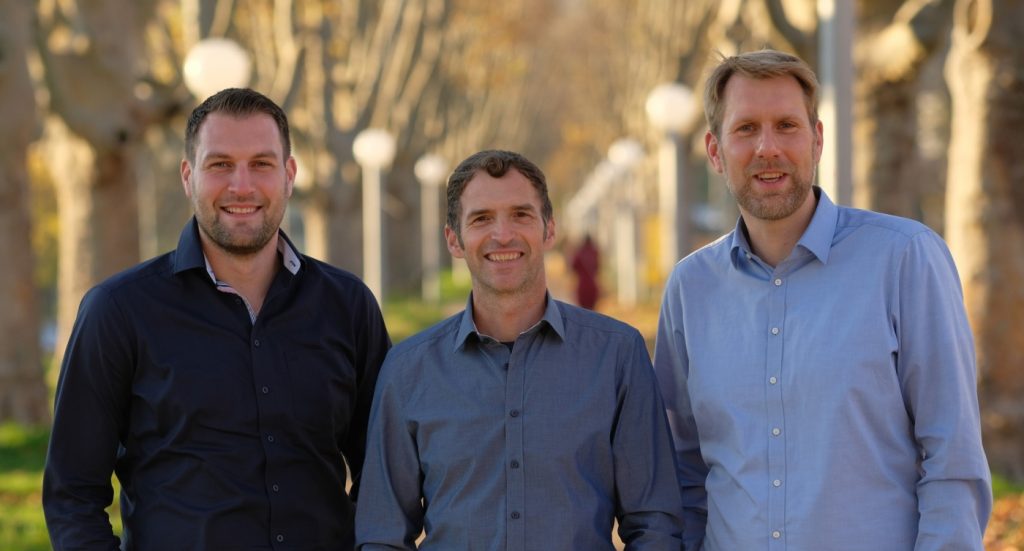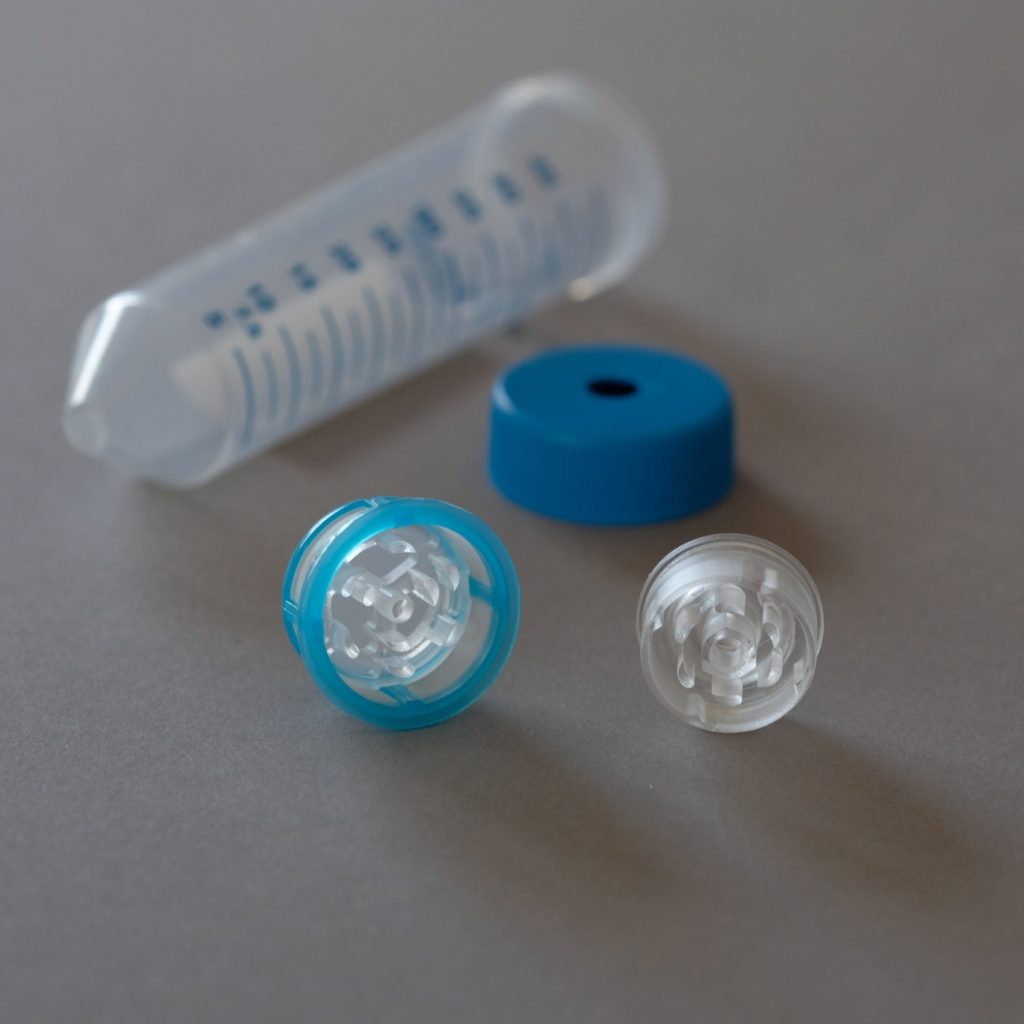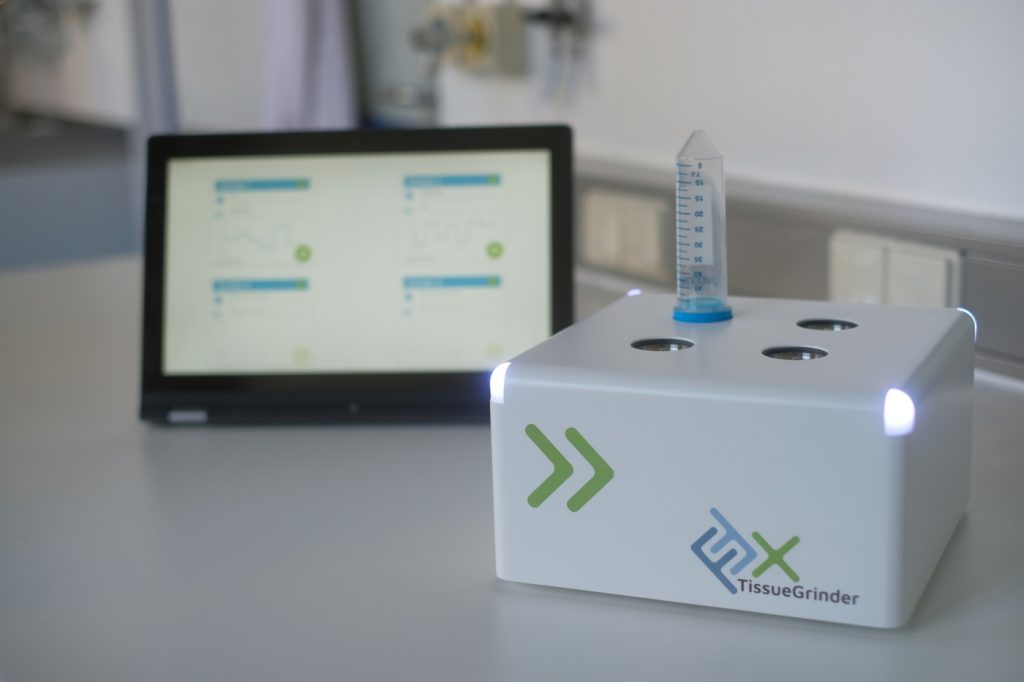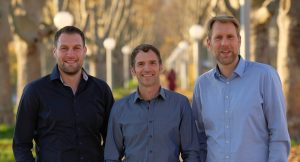10.03.2021
Author: Dr. Helmine Braitmaier
© BIOPRO Baden-Württemberg GmbH
Tissue cells are needed for medical diagnostics, cell therapies and tissue engineering, among other things. A novel tissue grinder gently and automatically dissociates cells from tissue. In November 2020, the newly founded biotech company Fast Forward Discoveries GmbH (FFX) delivered its first tissue grinders to customers.

Tissues can be composed of different cell types, which are often unevenly distributed throughout the tissue and therefore sometimes difficult to access for analysis, especially when located inside the tissue. When looking at tissue sections from biopsies under the microscope, only part of the sample can actually be seen.
Separating the tissue cells can, for example, help in tumour diagnostics to specifically pick out and examine tumour cells only – without the disturbing ‘background noise’ of healthy tissue cells. This helps doctors to better tailor cancer therapy to individual patients and their tumour.
“The isolation of single cells from tissue samples is the starting point for many different applications – and not just in tumour diagnostics,” says the CEO of Fast Forward Discoveries, Felix Dirla. Single cells are needed for analytical methods such as single-cell sequencing and flow cytometry as well as for repairing or replacing damaged tissue in patients who have suffered a stroke or a heart attack, for example.
At present, laboratory staff often still cut up tissue by hand using a scalpel and then either feed the pieces of tissue through a fine strainer or treat them with enzymes in order to obtain individual cells. “The manual process is extremely time-consuming and only reproducible to a limited extent, so the percentage of dissociated cells varies greatly,” says Stefan Scheuermann, who is responsible for application and business development at Fast Forward Discoveries. Enzymes might also damage cell surface markers that are important for a range of different analyses.

Working with Felix Dirla and Dr. Jens Langejürgen, Scheuermann has developed a device that can dissociate living cells from fresh or frozen tissue samples as well as preserved cells from archived histological sections without the aid of enzymes, and brought it to market maturity. In June 2020, the three entrepreneurs founded the Mannheim-based company, Fast Forward Discoveries GmbH.
The tissue grinder works in a similar way to a spice grinder. The core of the device consists of a grinder, which is positioned in the lid of a standard centrifuge tube. It consists of two grinding discs, a rotor and a stator, equipped with counter-rotating teeth-like polycarbonate blades. The pieces of tissue are placed between these ‘teeth’. A benchtop device, which can hold up to four grinding tubes at a time, then makes one of the grinder discs rotate. According to the company, the blades disintegrate the tissue within five minutes without damaging the cells.
After the grinding process, the grinding tube is transferred directly into a centrifuge. The purified cells accumulate at the bottom of the centrifuge tube, while a built-in strainer retains tissue and cell debris. “The integrated strainer means that fewer pipetting steps are required, and this reduces the risk of cell contamination,” Scheuermann explains.
Together with research partners, the device has already been used to process tissues with different properties, including lymph nodes, liver, skin and cartilage. “Tissues containing collagen, such as skin, for example, but also brain tissue, which is very sensitive because of the neuron extensions, used to be major challenges,” says the biotechnologist.
The device protocol can therefore be adapted to different tissue types. For example, changing the direction in which the grinder rotates causes the specially shaped blades to cut the tissue in one direction and grind it in the other. How fast the grinder rotates and for how long can also be controlled via software.

Scheuermann and some other colleagues previously developed and patented the prototype of the device as part of the Fraunhofer Institute for Manufacturing Engineering and Automation IPA’s Project Group for Automation in Medicine and Biotechnology (PAMB) in Mannheim. “At first, we didn’t quite realise the potential of the device because cell dissociation is only a small component of a process chain,” Scheuermann recalls, continuing that “only gradually did the developers realise that dissociating the cells was the crucial ‘bottleneck’ in various applications”.
At a trade show two years ago, medical technology entrepreneur Felix Dirla became aware of the researchers’ development. “What fascinated me about it was the universal applicability of the device, which is usually what helps a start-up to get off the ground.” Together with Scheuermann and Dr. Jens Langejürgen, Scheuermann’s boss at the Fraunhofer Institute, Dirla eventually started the process of setting up a company with financial support from the Fraunhofer’s start-up funding programme.
In November 2020, the first devices left the production facility at the company’s second site in Frankfurt am Main. However, Dirla admits that due to the coronavirus crisis in spring 2020, sales got off to a delayed start: “The interest was there, but laboratories were either receiving fewer tissue samples from routine medical examinations or shutting down completely.” “As a result”, he said, “potential buyers didn’t have the chance to try out the device before summer 2020.” “With a new technology, you don’t necessarily buy without trying,” Dirla adds.
Nevertheless, Dirla is confident about the future: “We have had a lot of positive feedback in recent weeks. The coronavirus crisis has slowed us down, but hasn’t thrown up any particular obstacles.” The founders are also looking to cooperate with biotechnology companies that manufacture products for single-cell applications. “Initial negotiations are already underway”, Dirla said. The goal: every step from tissue disruption to application will be standardised, if not automated. Gentle cell dissociation, a prerequisite for many applications, could thereby “enormously accelerate new discoveries.” At least that is what the company is hoping and its name suggests: Fast Forward Discoveries.
Scheuermann S. et al. (2019). A step towards enzyme-free tissue dissociation. Current Directions in Biomedical Engineering 5(1): 545-548
Felix Dirla
Geschäftsführer
Fast Forward Discoveries GmbH
CUBEX41
Theodor-Kutzer-Ufer 1-3
68167 Mannheim
Tel.: +49 (0) 621 391818 10
E-Mail: felix.dirla(at)ff-x.com
Please click here for the original article on health care industry BW.
